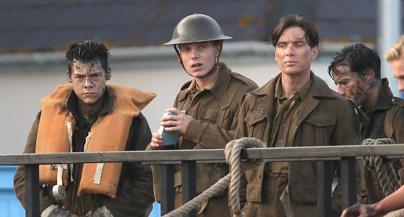|
|
Movie Review: DunkirkBy Steven SlaterAugust 1, 2017
Nolan attempts to combine the tension from each by intercutting them as though they occur simultaneously. This can have odd consequences, such as one storyline switching between day and night while another maintains a continuous arc in daylight, as well as showing us events multiple times. Perhaps Nolan became addicted to this technique after the great success it achieved way back with Memento, and in Dunkirk I can understand the logic from a narrative standpoint (otherwise the aerials would only occur during the last few minutes of the film!), but it seems to confuse the story more than aid the impression. Regardless, it definitely allows Tom Hardy and his incredible flying stunts to be showcased to great affect. My favorite shot of the film is the Spitfire plane gliding without any more fuel, silently over the sunset lit cityscape of Dunkirk. It is an exact emotional analogue to that shot in The Dark Knight where the Joker hangs out of the cop car. In a film with Hans Zimmer scoring and Nolan’s tendency for mixing loud, the silent moments tend to speak with the most volume. Some of the scenes are truly harrowing, in a way only Nolan can construe with real ships, water, actors, and minimal CGI. His method of filmmaking achieves a massive sense of scale, and when the U-boats and aerial bombardments sink the English destroyers, the IMAX scenes strike right to the bone of fear. Almost the entire film was photographed in IMAX 70mm, a bravura achievement unlikely to ever be topped. Hoyte Van Hoytema and Nolan do things with a 50-pound camera you never thought possible, using it as nimbly as a GoPro. The fact that Nolan prefers timing on film as opposed to digitally also lends the film an older feeling; some of the 70mm footage not in IMAX (about 25 percent was shot in 5-perf 70mm, like Lawrence of Arabia or The Hateful Eight) looks straight out of the 1960s, fitting the type of film if not the more modern filmmaking.
|

|
|
|

|
Friday, November 1, 2024
© 2024 Box Office Prophets, a division of One Of Us, Inc.


